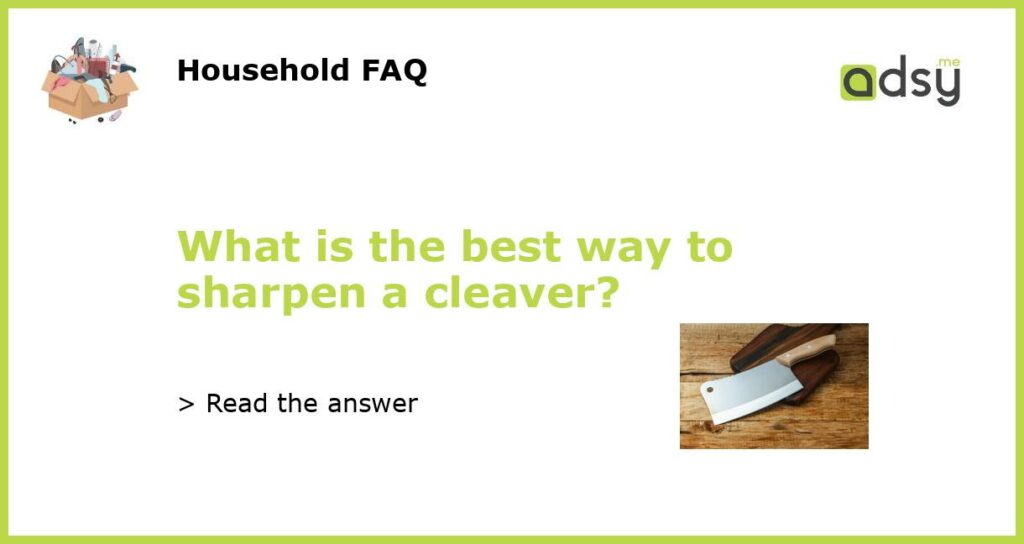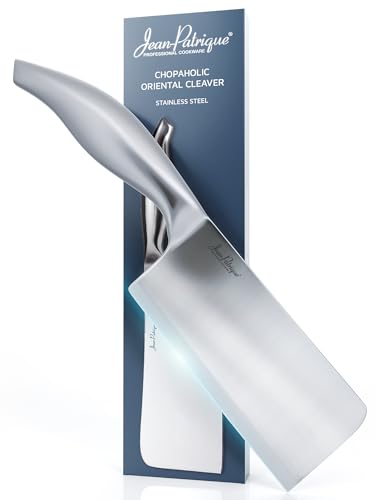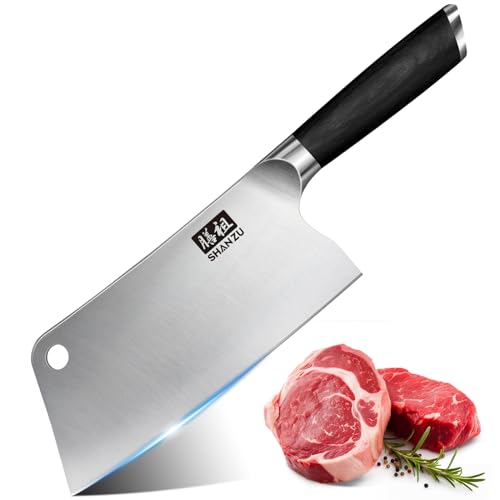A cleaver is one of the most important and useful tools in any kitchen. Whether you’re a professional chef or a home cook, a sharp and well-maintained cleaver can make cooking tasks easier and faster. As with any blade, a cleaver can become dull over time, making chopping and cutting harder and less safe. In this article, we’ll explore the best way to sharpen a cleaver to keep it in excellent condition and help you cook your favorite dishes with ease.
Why is it important to keep a cleaver sharp?
A dull cleaver can be frustrating to use and can also be dangerous. When the blade is blunt, it can slip off the food and injure your fingers. Additionally, a blunt cleaver will require more force to chop, increasing the risk of muscle strain or repetitive stress injuries. Keeping your cleaver sharp will make chopping and cutting easier and more enjoyable.
How to sharpen a cleaver
There are different methods to sharpen a cleaver, but one of the most effective is using a sharpening stone. Here is a step-by-step guide:
- Choose a sharpening stone with a grit of at least 1000. If your cleaver is very dull, you may need to start with a coarser stone with a grit of 400 or 500.
- Wet the stone and place it on a stable surface. You can use a rubber mat or a towel to prevent slippage.
- Hold the cleaver with both hands and place the blade at a 20-degree angle against the stone. Make sure to keep the angle consistent throughout the sharpening process.
- Apply light pressure and move the blade back and forth across the stone, starting at the base of the blade and moving towards the tip. Repeat this step on the other side of the blade, using the same angle.
- Finish by honing the blade with a leather strop or a honing rod, which will polish the edge and remove any burrs.
Additional tips for maintaining a cleaver
In addition to sharpening your cleaver regularly, here are some tips to keep it in top condition:
- Clean the blade after each use, using mild soap and warm water. Avoid using abrasive materials that can scratch the surface.
- Store the cleaver in a knife block, a magnetic holder, or a sheath to protect the blade and prevent accidents.
- Avoid using the cleaver to chop bones, as this can damage the edge and the blade. Instead, use a dedicated bone cleaver or a saw.
- If you’re not confident in sharpening your cleaver yourself, you can take it to a professional sharpening service or a local knife store.
- Consider investing in a high-quality cleaver made of durable materials, such as stainless steel or carbon steel. A good cleaver can last for many years with proper care and maintenance.
Sharpening a cleaver is a crucial part of maintaining its functionality and safety. By using a sharpening stone and following the recommended steps, you can ensure that your cleaver stays sharp and effective for all your cooking needs. Additionally, keeping your cleaver clean and properly stored will help prolong its lifespan and save you from unnecessary accidents in the kitchen.






